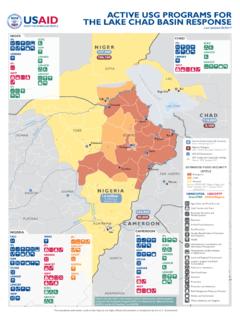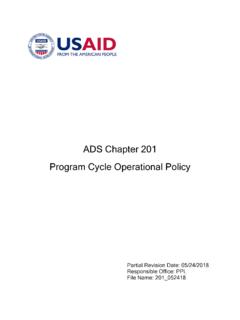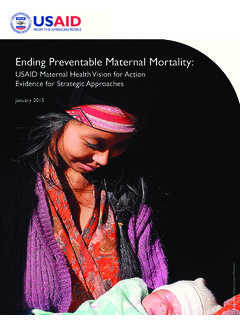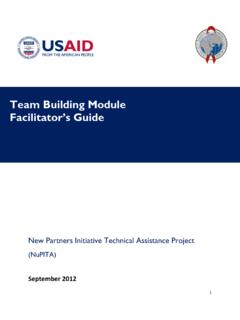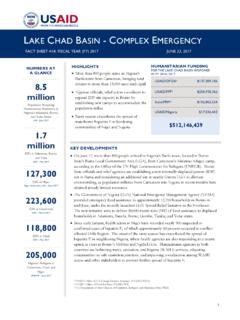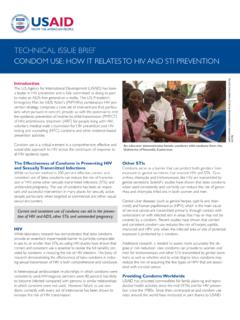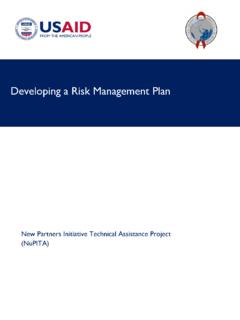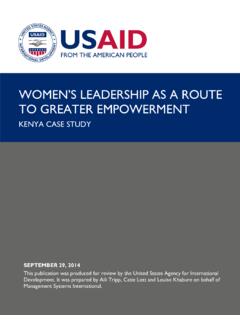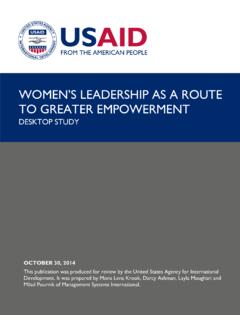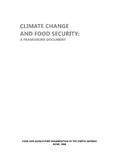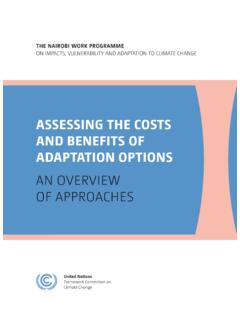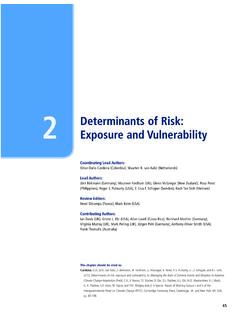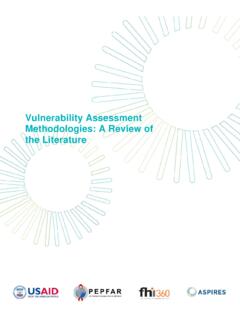Transcription of CLIMATE CHANGE AND CONFLICT - United States Agency …
1 CLIMATE CHANGE AND CONFLICT AN ANNEX TO THE USAID CLIMATE -RESILIENT DEVELOPMENT FRAMEWORK February 2015 This publication is made possible by the support of the American people through the United States Agency for International Development (USAID). It was prepared by Engility Corporation. This report has been prepared for the United States Agency for International Development (USAID), under the CLIMATE CHANGE Resilient Development Task Order No. AID-OAA-TO-11-00040, under the Integrated Water and Coastal Resources Management Indefinite Quantity Contract (WATER IQC II) Contract No.
2 AID-EPP-I-00-04-00024. Engility Corporation Contact: Glen Anderson, Chief of Party, Engility Corporation 1320 Braddock Place Alexandria, VA 22314 Cover photos: Irrigated cotton farming in Ethiopia: FESS Meeting to discuss the effects of CLIMATE CHANGE in Chuquibamba, Arequipa, Peru: Cynthia Brady, USAID Two Latin American children play near a water pipe: USAID A Cambodian forest farmer family: USAID Workshop meeting: USAID The Coropuna snow peak seen across the paramo, Arequipa, Peru: Panoramo CLIMATE CHANGE AND CONFLICT : AN ANNEX TO THE USAID CLIMATE -RESILIENT DEVELOPMENT FRAMEWORK February 2015 Prepared for: United States Agency for International Development Global CLIMATE CHANGE Office, CLIMATE CHANGE Resilient Development project Washington, DC Prepared by: Kirby Reiling and Cynthia Brady United States Agency for International Development Washington, DC With contributions from.
3 John Furlow and Mary Ackley United States Agency for International Development And Peter Schultz, Charlotte Mack, Miyuki Hino, and Joanne Potter ICF International Fairfax, Virginia Contact: Michael Cote, Engility Corporation, DISCLAIMER The author s views expressed in this publication do not necessarily reflect the views of the United States Agency for International Development or the United States Government. CLIMATE CHANGE AND CONFLICT AN ANNEX TO THE USAID CLIMATE RESILIENT DEVELOPMENT FRAMEWORK III TABLE OF CONTENTS ACKNOWLEDGEMENTS.
4 V ACRONYMS .. vii TECHNICAL BRIEF .. ix 1. INTRODUCTION .. 14 2. A FRAMEWORK FOR ANALYSIS .. 16 Context .. 16 Institutional Performance: Identity Groups, Grievances, Societal Patterns .. 18 Key actors Interests, Resources, and Strategies .. 18 3. APPLYING THE ANALYSIS .. 20 4. CONFLICT SENSITIVITY .. 25 5. ENVIRONMENTAL PEACEBUILDING .. 27 CLIMATE -Resilient Development in Peacebuilding and Statebuilding .. 28 6. GENERAL PRINCIPLES .. 30 7. CONCLUSION .. 32 8. REFERENCES AND ADDITIONAL RESOURCES .. 33 CONFLICT - CLIMATE Nexus .. 33 CLIMATE -Focused.
5 38 CONFLICT -Sensitivity, Programming, Monitoring, Evaluation, and More .. 39 CLIMATE CHANGE AND CONFLICT AN ANNEX TO THE USAID CLIMATE RESILIENT DEVELOPMENT FRAMEWORK V ACKNOWLEDGEMENTS The United States Agency for International Development (USAID) would like to extend its thanks and appreciation to Geoff Dabelko and Lauren Herzer of the Woodrow Wilson International Center for Scholars, Jim Jarvie of Mercy Corps, Jeffrey Stark of the Foundation for Environmental Security and Sustainability, and Jon Barnett of the University of Melbourne for their input and feedback on this paper.
6 Contributions from Peter Schultz, Charlotte Mack, Miyuki Hino, and Joanne Potter were provided under the Water II IQC CLIMATE CHANGE Resilient Development Task Order managed by Engility (IQC Contract No. AID EPP-1-00-04-00024, Task Order ). This document was informed in part by discussions at two workshops focused on CLIMATE CHANGE and peacebuilding in Washington, DC, United States in 20121 and Addis Ababa, Ethiopia in Partnership (2012). & Lyons (Eds) (2013). CLIMATE CHANGE AND CONFLICT AN ANNEX TO THE USAID CLIMATE RESILIENT DEVELOPMENT FRAMEWORK VII ACRONYMS CAF CONFLICT Assessment Framework CMM Office of CONFLICT Management and Mitigation DCHA USAID Bureau for Democracy, CONFLICT , and Humanitarian Assistance DRR Disaster Risk Reduction IPCC Intergovernmental Panel on CLIMATE CHANGE LTPR land tenure and property rights OECD-DAC Organization for Economic Cooperation and Development Development Assistance Committee USAID United States Agency for International Development WASH Water.
7 Sanitation, and Health CLIMATE CHANGE AND CONFLICT AN ANNEX TO THE USAID CLIMATE RESILIENT DEVELOPMENT FRAMEWORK IX TECHNICAL BRIEF This Technical Brief was produced by the Office of CONFLICT Management and Mitigation (CMM) in the United States Agency for International Development s (USAID s) Bureau for Democracy, CONFLICT , and Humanitarian Assistance (DCHA/CMM). It is an annex to USAID s CLIMATE -Resilient Development Framework, produced by USAID s Global CLIMATE CHANGE Office in the Bureau for Economic Growth, Education, and Environment.
8 It is addressed primarily to technical officers at USAID seeking to understand the linkages between CLIMATE CHANGE and CONFLICT . For more information on CONFLICT -related topics, refer to DCHA/CMM s Technical Publications at EXECUTIVE SUMMARY There is growing recognition of the interrelationship between CLIMATE CHANGE and CONFLICT . Research and field experience are demonstrating that these dynamics are often particularly acute in countries that are fragile or CONFLICT -affected regions that represent the majority of the countries in which USAID works.
9 It is important, therefore, that USAID and its partners be aware of how CLIMATE CHANGE may affect security and stability, and how dynamics of CONFLICT , fragility, and peace may either support or hinder efforts to address CLIMATE . Examining the CLIMATE CHANGE CONFLICT nexus can help avoid unintended outcomes that undermine USAID objectives and illuminate opportunities to strengthen efforts to promote both peace and CLIMATE resilience. This paper provides a set of guidelines for USAID and its partners to employ in planning, designing, implementing, and learning from programs where CLIMATE CHANGE and CONFLICT have the potential to interact.
10 It is a complement to USAID s CLIMATE -Resilient Development Framework,3(CRD Framework), which outlines an approach for helping USAID and its partners achieve development objectives in the face of CLIMATE variability and CHANGE . It presents a framework for analysis, illustrates how this framework can be applied, and discusses ways to understand CONFLICT dynamics and be attuned to opportunities for peacebuilding through CLIMATE -related activities. FRAMEWORK FOR ANALYSIS The first step in ensuring integrated development approaches that are sensitive to both CLIMATE CHANGE and CONFLICT vulnerabilities is to analyze the CONFLICT dynamics.
